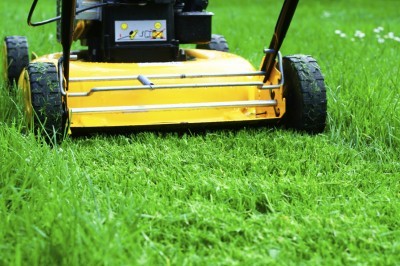






Mowing is a love-it-or-hate-it proposition for homeowners. You may think mowing your lawn is a sweaty, back-breaking chore or maybe you consider it an opportunity for healthy exercise as you commune with nature. Either way, mowing lawns properly is a requirement for healthy, vibrant turf.
Mowing lawns properly is important in maintaining ongoing health. Mow your lawn when the grass is dry. Diseases spread readily on damp turf and the wet grass can clog your mower. However, don’t mow during the hottest part of the day. Intense heat isn’t healthy for your lawn (or you) either.
Mow in a different direction each time to promote even, upright growth. Otherwise, the grass will lean towards the direction in which you mow.
Leave the clippings so they can return valuable nutrients to the lawn. If you mow regularly, the short clippings decompose quickly and won’t damage your lawn. However, if you wait too long between mowing, or if the grass is damp, you may need to rake lightly, as a deep layer of clippings can smother the lawn. If the clippings form rows or clumps, rake them lightly to distribute them evenly.
There is no set time for mowing the lawn, but most lawns will require mowing at least once a week during late spring and early summer. To keep your lawn healthy, don’t remove more than one-third of the height at each mowing. Removing more can affect healthy root growth, which means the lawn will need more water during warm, dry months.
Cutting the lawn too close can also increase your lawn’s vulnerability to pests and weeds. As a general rule of thumb, a length of about 2 ½ inches, increasing to 3 inches during the summer, looks good and promotes deep, healthy roots.
Copyright © www.100flowers.win Botanic Garden All Rights Reserved